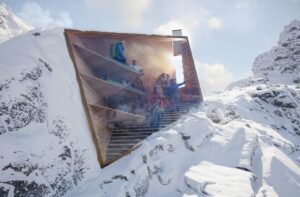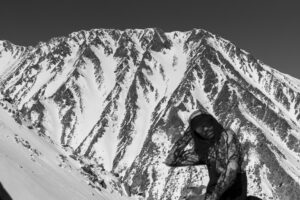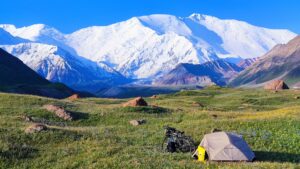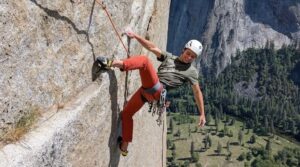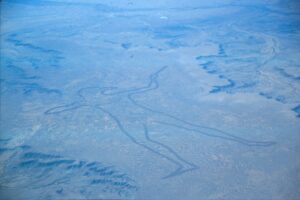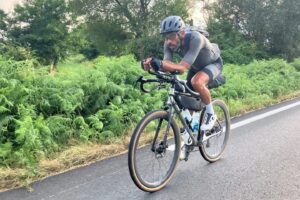The following article by Piotr Chmielinski appears on ExplorersWeb in its original and unedited form.
Arrest, interrogations and threats, but the Amazon odyssey continues
It’s been really difficult period for Pete Casey’s journey from the Amazon’s mouth to her source. And, it was another long break in his walk and swim. This time not the rainy season bringing floods and high dangerous water in the river were the reasons, but the political issues made continuation of the travel hardly possible. Searching for the solution was a long and complicated process, but finally, Pete is in Peru.
Pete Casey shared his last experience with Piotr Chmielinski – see the interview below:
Pete, you were stuck in Brazil right before the border with Peru for the last few months on your Amazon trip. What was the reason for that delay?
Yes. It was at the Feijoal Ticuna community where it came to an abrupt halt. I and the two Ticuna brothers were unexpectedly stopped, questioned, searched and detained not long after our arrival there walking from Sao Paulo de Olivença. We were asked to leave the next morning and I was told I needed to get permission from the Chief and/or from FUNAI. The Ticuna guys wanted to go back home for a festival anyway, so I decided to get a boat to Benjamin Constant, where I could get cash to pay them. From there they could get the fast boat home while I waited for their promised return in a week’s time. Then we would walk to the border. I paid them in advance, but after waiting almost four weeks, and being unable to contact them, I found out they were unable to return to walk.
So, I was stuck in Benjamin Constant without Ticuna guides, having frustratingly lost another month of dry season low-water walking time. After another few weeks searching and asking around, I was set to go back to Feijoal with another Ticuna guide who also worked with FUNAI.
We both assumed we wouldn’t have any issues, when we left Benjamin Constant – we just needed to speak to the Chief, and ask if we could walk past Feijoal along the riverbank. But we were wrong.
After being arrested again, we were interrogated, searched, threatened, and locked up for the night. I was quite concerned for our safety after an announcement was made over their community tannoy about us, and hundreds of people surrounded the building, banging on the walls, forcing open the windows, shouting and laughing. They were only held back by the local security guards dressed in black and carrying truncheons.
Cutting the story short, it turned out that people wanted me to pay a huge fee to pass the community – money I simply did not have.
Who or what helped you find the solution?
After speaking to FUNAI, I realised that if I were to seek permits, it would be a very long and complicated process that could take anything up to 8 months. It would require a decision to be made in Brasilia, and it was very unlikely the decision would be made in my favour.
Despite the locals I confided in warning me never to go back, and telling me I would be arrested and jailed in Tabatinga, or deported, or worse still shot if I set foot on their land again, I was determined to find a solution. I even considered restarting my walk from Sao Paulo de Olivença and avoiding Ticuna territory altogether by walking on the other side of the Rio Jandiatuba, but it would add another two months and cost money I just couldn’t afford.
I studied all the FUNAI and other maps and finally found a route I could squeeze through which would only require a little luck at the entry point and would take me across territory that separated various indigenous areas but itself was not (yet) officially recognised and registered as belonging to any of the Ticuna groups. The entry point, however, was right next to the lion’s den, as it were – at the point we had earlier walked out of Feijoal looking for a boat to take us to Benjamin Constant.
If I could avoid being spotted long enough to land and get to the piece of no man’s land I had targeted, I calculated I could get to Benjamin Constant without any further hassle. It was a risky solution – certainly longer and more dangerous – but I was confident I could make it. Now I just needed a willing accomplice.
Were the problems you encountered while crossing that part of Brazil a consequence more of political or historical issues?
Political for sure. The indigenous groups are right to want to protect their land and rights. The government agency FUNAI has had its funding greatly reduced recently and is unable to effectively support and protect the Ticuna from illegal mining, logging, commercial fishing and farming. With new president Jair Bolsanaro’s proposed pro-development policies, things look set to get much worse for largely defenceless local communities. The Ticuna are angry with FUNAI and the government, and rightly fear for their future. The Feijoal community leaders could have allowed us to pass. They understood my mission, and had no issue with it, but bureaucracy and politics just got in the way.
Did all these troubles with crossing the border make you doubt in successful end of your trip?
Yes. Initially, with all the warnings I was getting, I thought I would have to give up on this section and carry on into Peru. But I knew I couldn’t live with that. I needed to be able to say to myself that I had covered every inch of ground from river mouth to the border. Every inch.
I’m not out of the woods yet, of course (pardon the expression): the delay has meant that my original plan to reach Iquitos by Christmas and avoid the difficulties of the flood season and rains was no longer feasible.
What new knowledge or experiences did you gain from this ‘incident’?
Traversing the Amazon in such an immersive way brings a constant flow of new experiences and knowledge. I guess for starters that I got to know Benjamin Constant way better than any tourist on a few days’ visit would! I also came to understand better this key tri-border region, where, as you can imagine, everyone lives in the constant shadow of illicit drugs, arms and other trades.
This experience has also highlighted to me the complex issues facing the indigenous people, trying to remain independent yet at the same time having to be dependent on modern Brazil with all the associated problems this brings. FUNAI is in the middle, dealing with the consequences on a limited budget after recent government cuts to their funding. I was not aware until now of the extent of prejudice there seems to be against the Ticuna and other indigenous groups from many of the people who live in the towns and cities. I saw and sensed and was saddened by this, especially when I was with the two Ticuna brothers.
How did you spend time while waiting for the opportunity to move on?
I used the time as best as I could. Probably 50% was spent resolving technical issues with my website and online bank, PayPal, Skype, email, Garmin and other accounts. Over the last year all of these have developed major problems and jeopardized the expedition in some way or other.
I also had to change my planned routes several times to take in to account the rising water levels, and I took the time to study and plan beyond Iquitos using maps and information I managed to occasionally get on the internet.
I kept myself as fit as possible, although running in the streets early morning is out of the question, unless you want to be taken down by large packs of hungry, angry feral dogs (Benjamin Constant).
I managed to order and replace new items of much-needed gear, thanks for which is due to a certain supporters, without whom it would have been impossible financially or logistically.
I travelled to Atalaia do Norte a few times to meet with some of the indigenous groups from upriver on the Rio Javari. They often visit the town to buy supplies, and I was searching for another suitable person willing to complete the final section of the Brazil Amazon with me.
So, looking back, perhaps the time was needed to iron out ongoing expedition problems that I would have had to eventually address anyway.
What is the next step of your expedition?
The next few thousand steps! First, I have to swim across the Yavari river, and then take the plunge again into the jungle to make the crossing to Iquitos. The timing could not be worse. Not only will I have to deal with huge tracts of flooded forest and dangerously swollen rivers, there is also a lot of trafficking in the area. I can only think as far ahead as Iquitos.
My original aim of arriving at the source in September, has gone right out of the window. The odyssey continues, one step at a time.

Tracking map, showing Sao Paulo de Olivença to Eastiron.

December 28, 2018. After 3 years, finally in Peru but still far to the source of the Amazon River.
For additional information, pictures and tracking maps, check last Pete’s blog:
https://www.ascentoftheamazon.com/2018/12/jungle-all-the-way/

